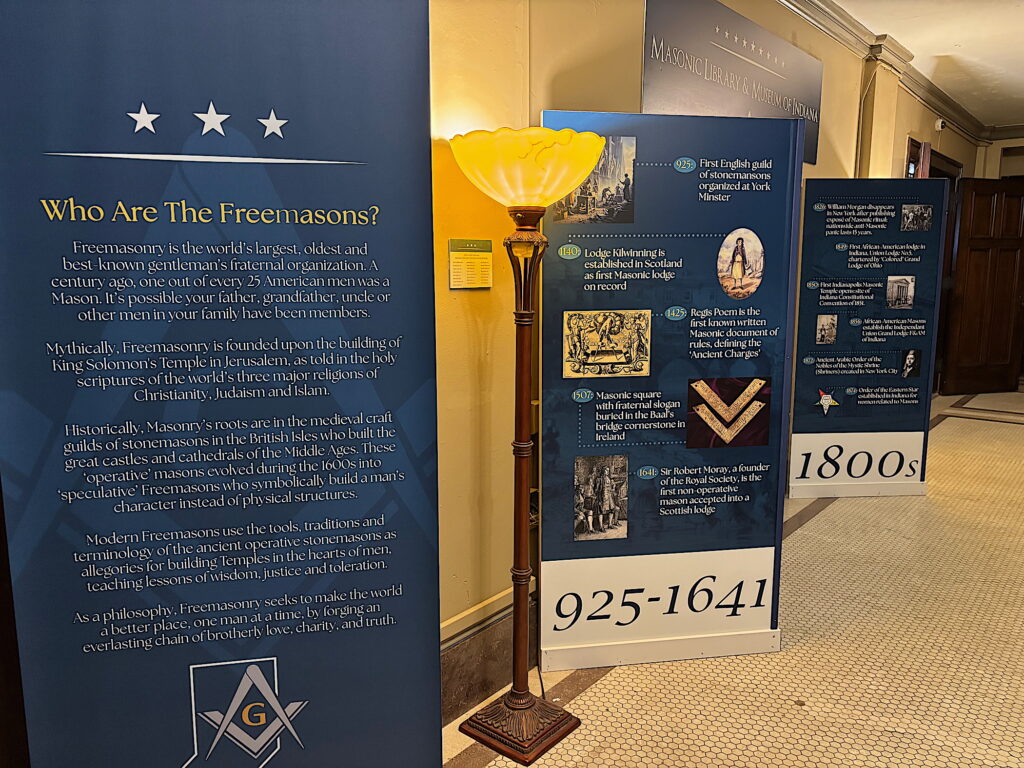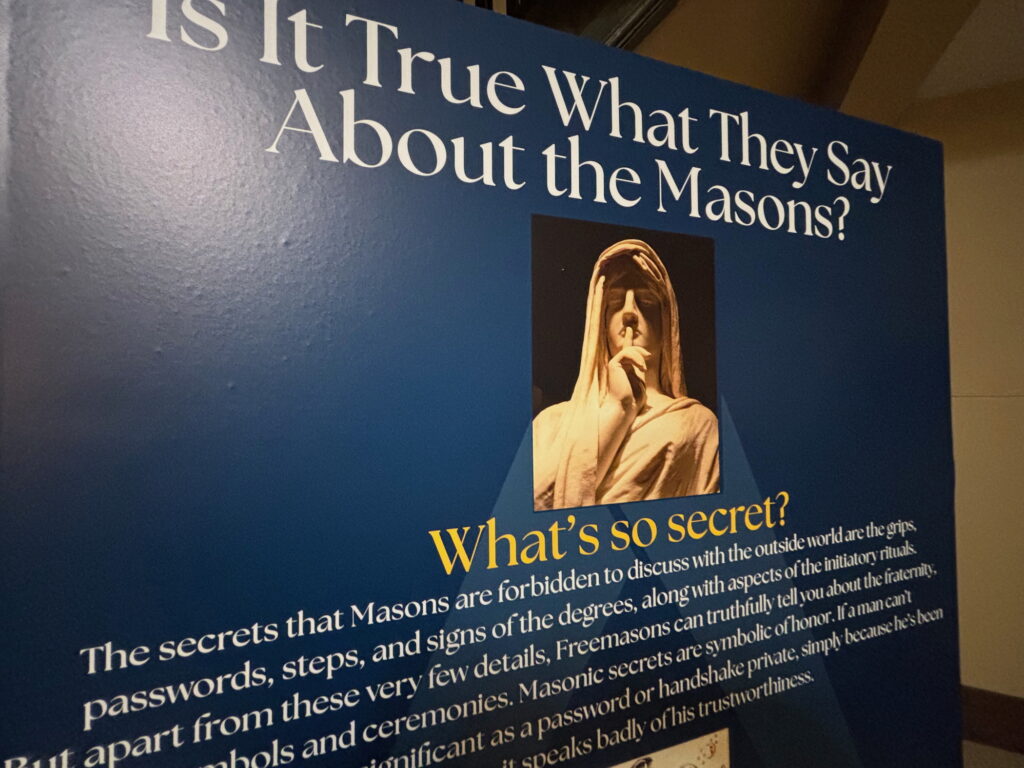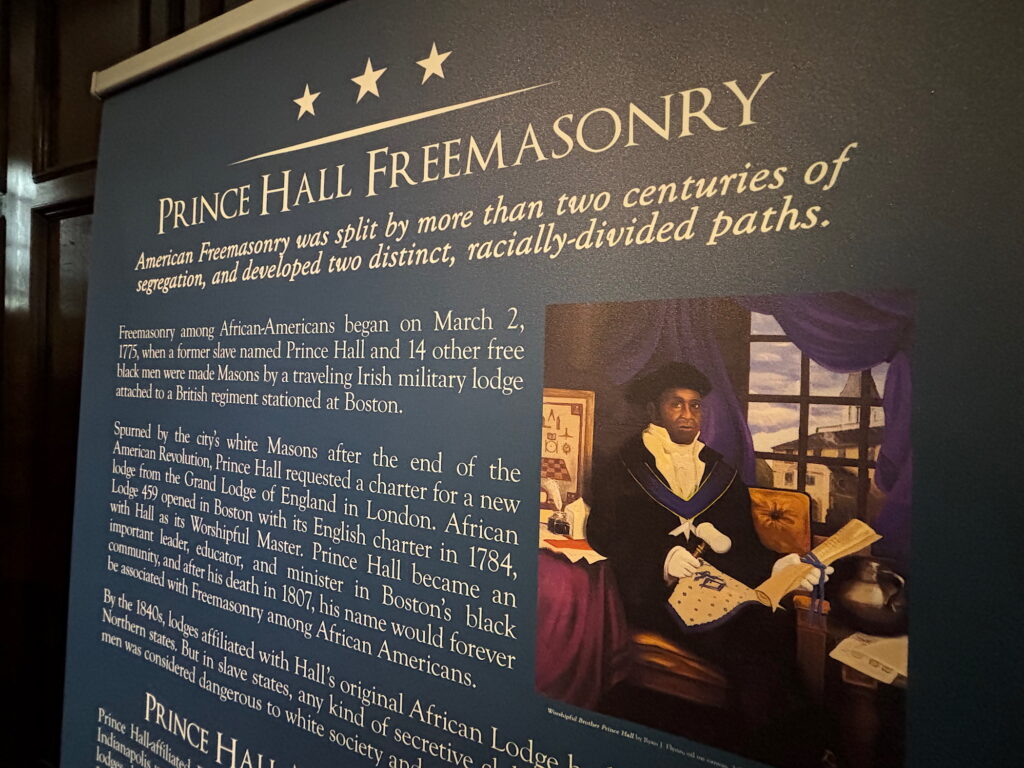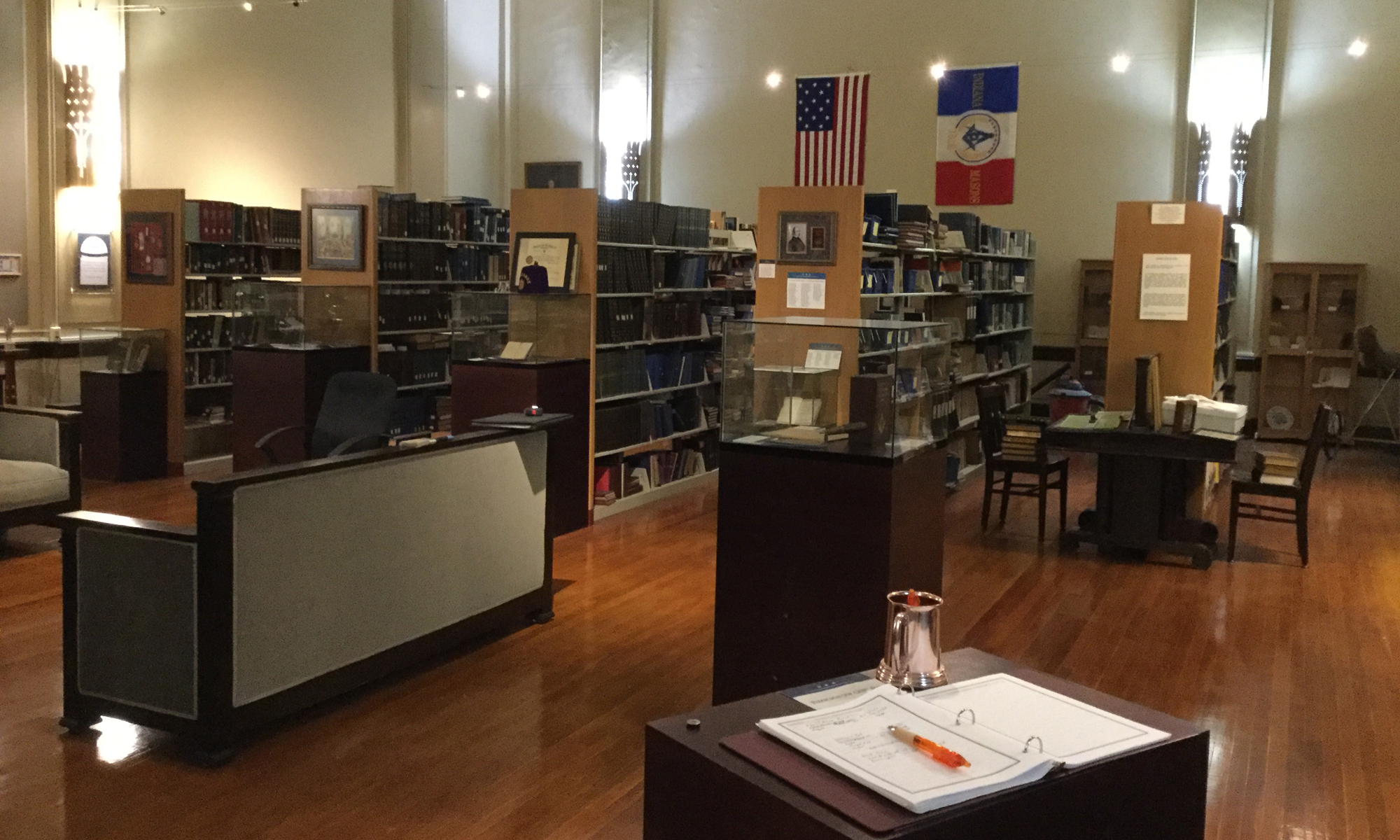
We have installed all new graphics in the lobby that provide a wealth of information in limited space. A series of panels display a timeline of Masonic history, from the days of its operative past through major changes over the centuries. This includes the formation of the first grand lodge of speculative Masonry in London in 1717, Masonry’s expansion across America, and the founding of the Grand Lodge of Indiana in 1818. It follows the fraternity’s growth all the way through the 1950s, right up to today.

Two panels are devoted to debunking the most commonplace myths and misconceptions about Masonry, while another shows the various appendant organizations that make up the wider family of Freemasonry. A separate panel displays the different buildings that have been home to the Grand Lodge since 1818. This includes the Schofield House, plus the three successive Indianapolis Masonic Temples that have commanded prominent positions in the capital city’s history ever since 1850.
Prince Hall Freemasonry Display

This year marks the 27th year since the Grand Lodge F&AM of Indiana and the Most Worshipful Prince Hall Grand Lodge F&AM of Indiana agreed on mutual recognition. Many of our guests have heard the term ‘Prince Hall Masons’ without knowing its meaning or significance. A new display tells the story of Prince Hall, the free black Boston leather worker who became the founder of Freemasonry for the black community in 1776. His African Lodge 457, which was chartered by the Premiere Grand Lodge of England in 1784, was the first black lodge in America.
The display also describes the spread of so-called Negro Freemasonry across the country and the foundation of the Independent Union Grand Lodge of Indiana in 1855, the precursor to the Prince Hall Grand Lodge in our state (their name was changed in 1944). And it tells the story of their founding Grand Master, John G. Britton, a manumitted slave who came to Indiana in the 1830s as a barber. Interestingly, his first newspaper advertisement in Vincennes, Indiana appeared during the height of the Morgan Excitement and the Anti-Masonic period. Britton hilariously states in the ad that he will “remodify the kingdom of the anti-Masons as to render the subjects thereof glad to have escaped with their lives”!
He relocated to Indianapolis in the 1830s and married Chaney Lively, Indianapolis’ first black citizen who arrived as a servant to Alexander Ralston, the city’s original designer. The Brittons were a respected couple in the city’s social scene and became the founders of the Bethel African Methodist Episcopal Church (AME), the oldest black congregation in the city. John Britton went on to be a representative of the state’s black citizens at the convention to rewrite the Indiana Constitution held in 1851 at the brand-new Indianapolis Masonic Temple. He was elected Grand Master of the Independent Union Grand Lodge when it formed in 1856.
